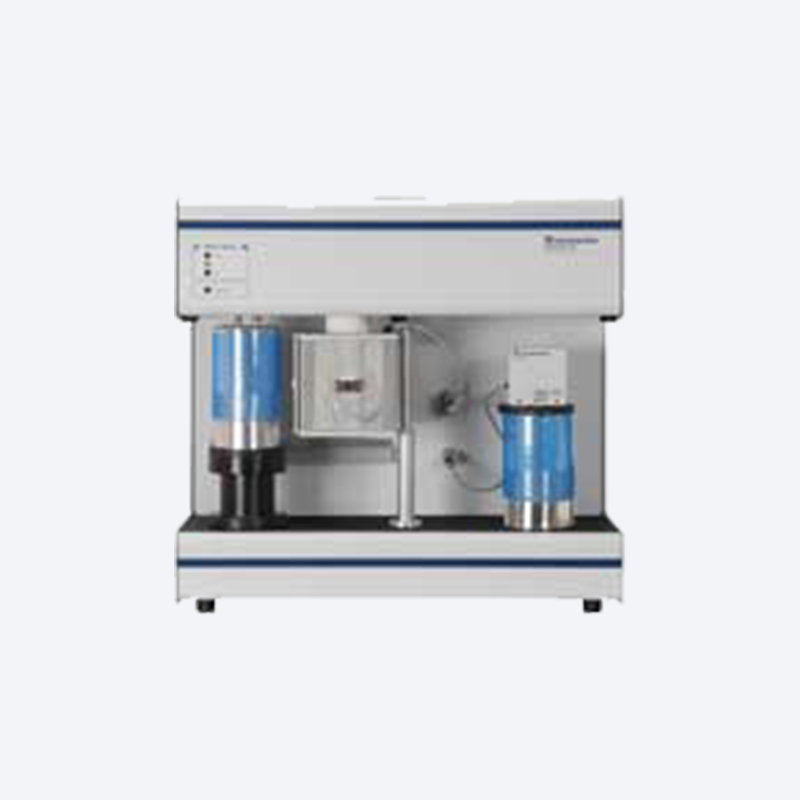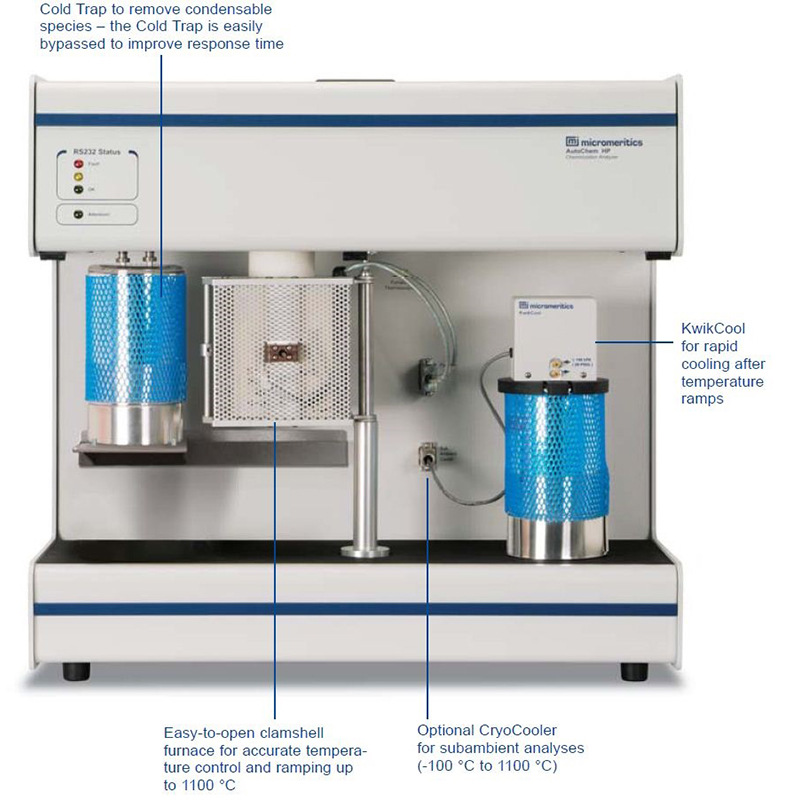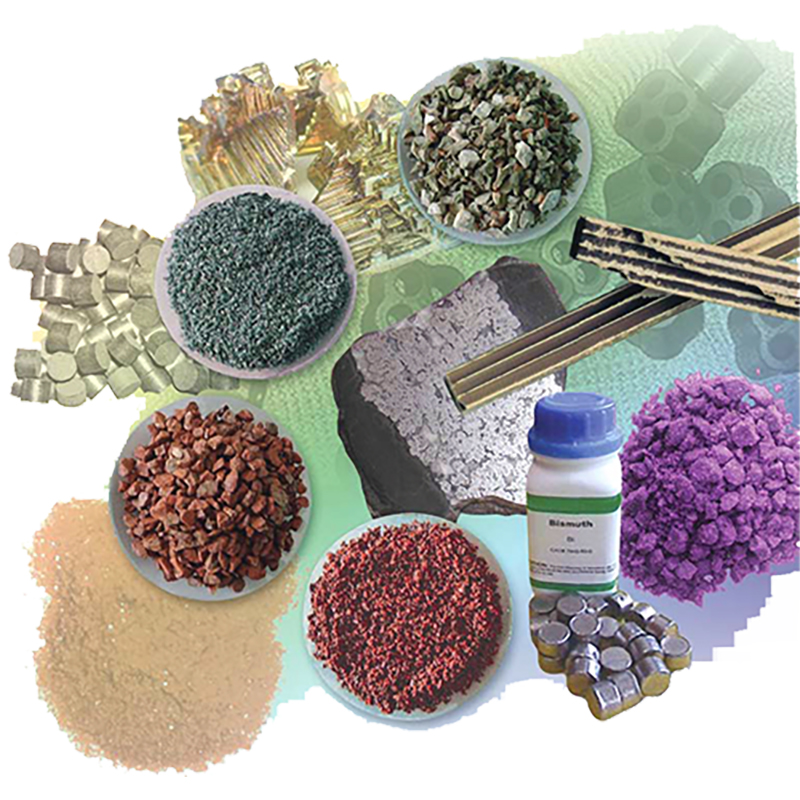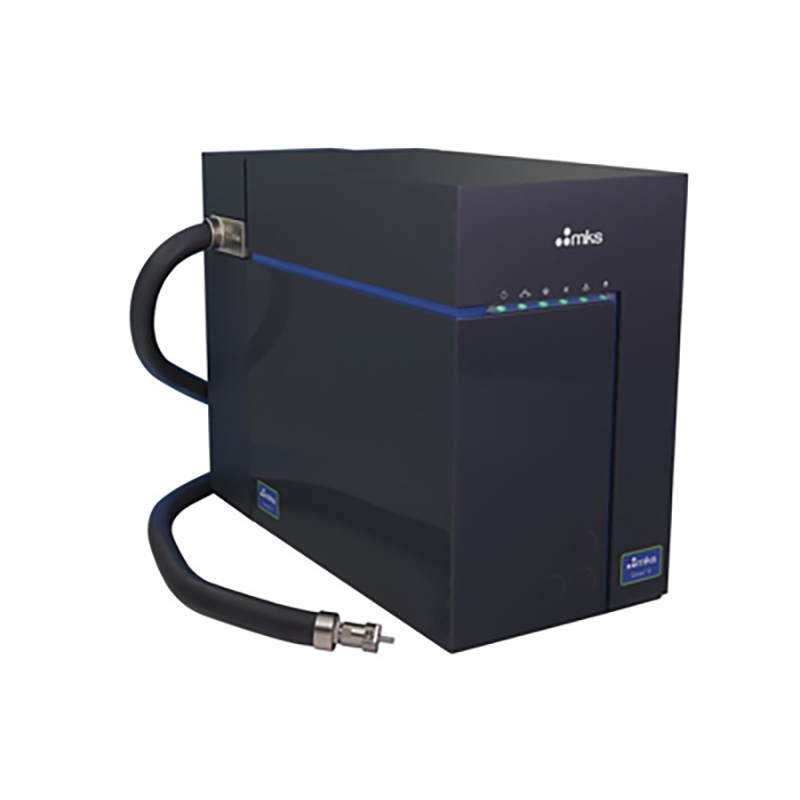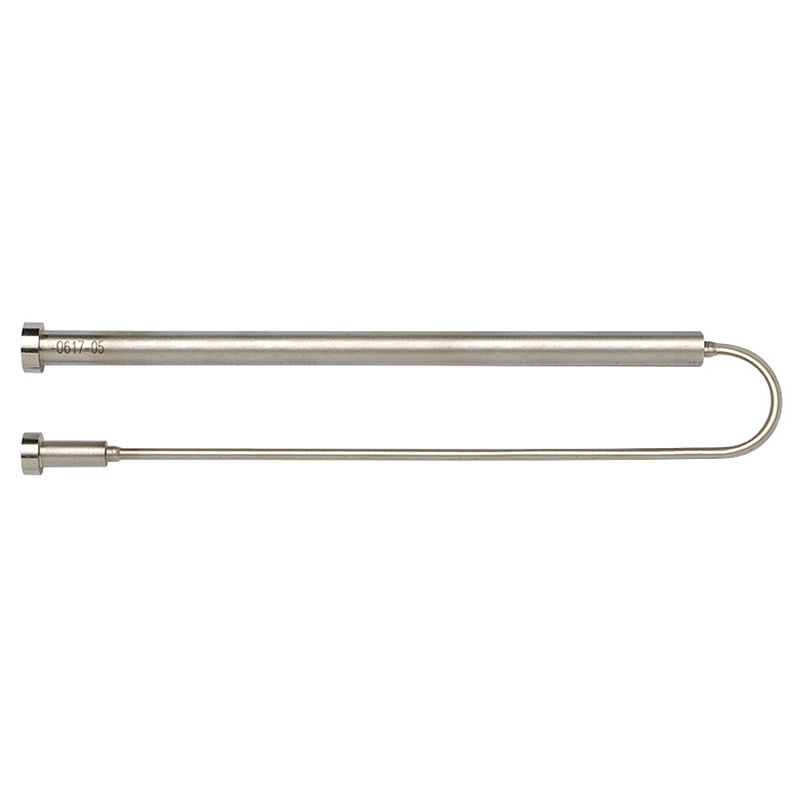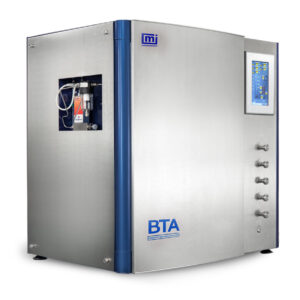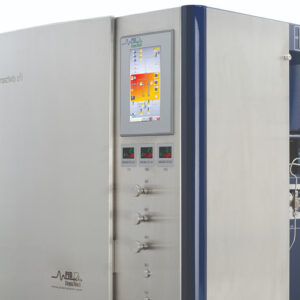Description
Equipped with many of the features of Micromeritics’ AutoChem II 2920, the AutoChem HP is suitable for a variety of applications including fuel cell and hydrogen storage research.
This microreactor, combined with a mass spectrometer, can also be used to determine product yields and catalytic activity under commercially viable conditions.
The use of a microreactor in the development process is a cost-effective alternative to pilot plants for many development projects. A microreactor is also an affordable option for small start-up companies that cannot afford to invest in a pilot plant to demonstrate their process.
- Allows preparation and analysis of sample at pressures up to 1000 psia with built-in safety checks
- Versatile analysis protocol permits complex sequencing and experimental design
- In situ experiments with virtually unlimited steps
- Records pressure as part of the experiment
- Capable of TPD, TPR, TPO, BET, and pulse chemisorption
- Three mass flow controllers and an electronically controlled pressure regulator provide precise gas control
- Twelve gas inlets – four each for preparation, carrier, and loop gases
- Stainless-steel sample tubes are capable of withstanding temperatures and pressures well above the system’s limits
- An interactive reporting system that includes an extremely versatile graphic user interface allowing custom presentation of results
Bench-top Microreactor Suitable for a Variety of Applications:
- HPTPR (High-pressure TPR) to emulate a commercial activation of a supported metal catalyst
- Fuel cell applications that require reforming hydrocarbon feeds to hydrogen
- Hydrogen storage applications using mixed metal hydrides that change hydrogen capacity as temperature changes – the user can vary hydrogen pressure to determine storage capacity as a function of pressure
- Simple chemical reactions where the product mix changes as a function of pressure – the AutoChem 2950 HP functions as a microreactor at typical process temperatures and pressures, allowing the user to collect reaction data at commercial conditions
AutoChem 2950 HP Software and Reporting
The AutoChem 2950 HP is controlled by powerful Windows-based software. It provides all the convenient features you are accustomed to when using Windowsbased programs. Point-and-click operations, pull-down menus, access to multiple printers and network drives, multitasking capability, and much more are featured in the AutoChem 2950 HP user interface. In addition, the familiar Windows format reduces the time required for training new operators, resulting in fast start-up and increased productivity.
Additional Capabilities
An Instrument Schematic screen displays the instrument’s current operating status, including the availability of analysis and pretreatment gases and vapors, direction of the gas flow, TCD reading, and allows the operator to assume manual control of the instrument if desired.
Set up Analysis Protocol Sequencing from any number of preprogrammed experiments or create a customized sequence. The user can easily select the pretreatment and analysis task, and specify criteria such as temperature ramp rates, gas flow rates, and data measurement intervals in the desired sequence. Modifications may be made to the analysis protocol at any time, even during analysis.
Fully integrated, interactive peak editor package enables the user to evaluate results quickly and easily, edit peaks, and produce reports that reflect specific needs. Adjusting peak boundaries is a matter of simply pointing and clicking. The peak editor can also be used to de-convolute overlapping peaks. The peak de-convolution is a simple-to-use option on the peak space editor that allows the user to maximize the information.
Numerous plots can be overlaid for easy comparison of different samples or for comparison of different data reduction techniques applied to the same sample. The operator can also plot two externally derived signals against time or sample temperature (e.g., mass spectrometer and gas chromatograph).
Integration of mass spectrometer data files, which allows the manipulation of the TCD and mass spectrometer simultaneously.
One computer can control two Micromeritics AutoChem HP analyzers making efficient use of valuable lab space.
AutoChem 2950 HP Hardware Features
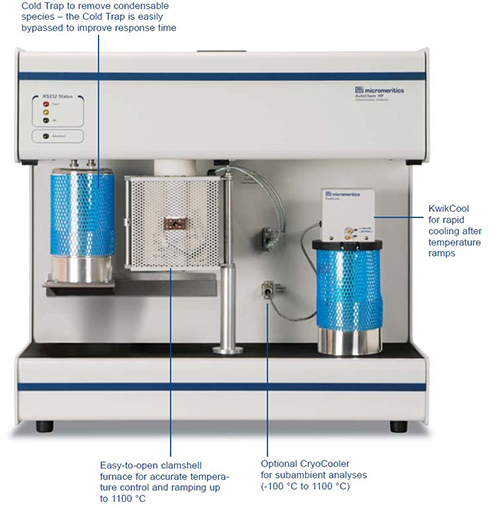
The AutoChem HP features stainless-steel construction, fully automated flow control and pressure control, an embedded microprocessor with real-time control, and an intuitive graphical user interface for reactor control. Like the AutoChem 2920, the AutoChem 2950 HP features a temperature-controlled, stainless-steel flow path to provide a stable inert operating environment and reduce the potential for condensation in the flow path. The embedded microprocessor allows the AutoChem series to operate with real-time control; this provides enhanced stability by separating the AutoChem control from a PC or workstation
Twelve gas inlets (4 each for preparation, carrier, and loop) provide the capability to perform sequential experiments such as TPR/TPO cycle experiments.
Equipped with high-precision, independently calibrated mass flow controllers providing extremely accurate, programmable gas control. The ability to control gas flow with accuracy assures a stable baseline and accurate determination of gas volumes.
Analysis gas may be introduced to the carrier stream by a precision automated loop. A conveniently located septum is also provided through which analysis gas can be injected by means of a calibrated syringe.
Thermal conductivity detector (TCD) is capable of detecting minute differences in the concentration of gases flowing into and out of the sample reactor. Its corrosion-resistant filaments are operated at constant temperature to prevent thermal runaway, which can destroy filaments in other systems.
A clamshell furnace can heat the quartz sample reactor up to 1100 °C. The AutoChem 2950 HP permits any number of ramp rates and sequences to facilitate customized experiments. The included KwikCool feature permits cooling the furnace temperature rapidly down to near ambient, reducing analysis time and increasing throughput. With the CryoCooler option, analysis temperatures can be ramped over the range of -100 °C to 1100 °C.
Four internal temperature-controlled zones can be heated independently of each other to as much as 150 °C. This prevents condensation in the flow path and allows studies to be performed with vapors.
The extremely low volume of the internal plumbing minimizes peak spreading and significantly enhances peak resolution. Furthermore, it reduces the time lag between sample reactions and the corresponding detector response.
A cold trap can remove certain substances before the gas flow reaches the detector. The cold trap can also be used as a delay path for BET surface area experiments.
Injection loops are provided for injecting carefully measured doses of gases for analyses such as pulse chemisorption. The AutoChem HP is shipped with a 1.0-cm3 loop installed; 0.5- and 5.0-cm3 loops are also included. If sample fi les are set up so that a loop is used for introducing gas into the analyzer, the instrument automatically doses the sample as specified in the sample file.
Stainless-steel sample tubes are capable of safe operation up to 1500 psia
AutoChem 2950 HP Technique Overview
An Example of Use
Consider a temperature-programmed reduction (TPR) in which a metal oxide is reacted with hydrogen to form a pure metal, in this case platinum. Argon, which has a very low thermal conductivity, is used as a carrier gas. It is blended in a fixed proportion with hydrogen, an analysis gas with a much higher thermal conductivity. Then the gas mixture flows through the analyzer, through the sample, and past the detector.
When the gas blend begins flowing over the sample, a baseline reading is established by the detector. This baseline is established at a low enough temperature so that no reduction of the sample is occurring. The proportion of gases flowing over the detector is the same as the proportion of gases entering the analyzer, because at the low temperature, there is no interaction.
The temperature is then gradually increased and when a critical temperature is reached, hydrogen atoms in the gas flow react with the sample, forming H2O molecules which are removed from the gas stream using a cold trap. As a result, the amount of hydrogen in the argon/hydrogen gas blend decreases and the proportion between the two gases shifts in the direction of argon, as does the mixture’s thermal conductivity.
Since argon has a lower thermal conductivity than hydrogen, the mixture’s thermal conductivity consequently decreases. The flowing gas removes heat from the filament more slowly, requiring less electricity to maintain a constant filament temperature. The instrument records the electrical demands as it changes (this is called the detector signal). The detector signal is recorded continuously over a range of temperatures. The resulting signals may present either positive or negative peaks.
This example illustrates the fundamental concept upon which the analyzer operates. Of course, the various types of analyses the AutoChem can perform result in different types of traces. For example, a pulse chemisorption analysis results in a series of peaks that gradually increases in size as the sample is dosed with separate but equal increments of gas. Initially, the gas uptake by the sample results in smaller peaks. But when all the active sites are saturated, no more gas can be taken up and the peaks become equal.
Chemisorption:
Chemical adsorption is an interaction much stronger than physical adsorption. In fact, the interaction is an actual chemical bond where electrons are shared between the gas and the solid surface. While physical adsorption takes place on all surfaces if temperature and pressure conditions are favorable, chemisorption only occurs on certain surfaces and only if these surfaces are clean. Chemisorption, unlike physisorption, ceases when the adsorbate can no longer make direct contact with the surface; it is therefore a single layer process.
AutoChem 2950 HP Applications
Catalyst
The active surface area and porous tructure of catalysts have a great influence on production rates. Limiting the pore size allows only molecules of desired sizes to enter and leave; creating a selective catalyst that will produce primarily the desired product. Chemisorption experiments are valuable for the selection of catalysts for a particular purpose, qualification of catalyst vendors, and the testing of catalyst performance over time to establish when the catalyst should be reactivated or replaced.
Fuel Cells
Platinum-based catalysts including Pt/C, PtRu/C, and PtRuIr/C are often characterized by temperature-programmed reduction to determine the number of oxide phases and pulse chemisorption to calculate:
- Metal surface area
- Metal dispersion
- Average crystallite size
Partial Oxidation
Manganese, cobalt, bismuth, iron, copper, and silver catalysts used for the gas-phase oxidation of ammonia, methane, ethylene, and propylene are characterized using:
- Temperature-programmed oxidation
- Temperature-programmed desorption
- Heat of desorption of oxygen
- Heat of dissociation of oxygen
Catalytic Cracking
Acid catalysts such as zeolites are used to convert large hydrocarbons to gasoline and diesel fuel. The characterization of these materials includes:
- Ammonia chemisorption
- Temperature-programmed desorption of ammonia
- Temperature-programmed decomposition of alkyl amines
- Temperature-programmed desorption of aromatic amines
Catalytic Reforming
Catalysts containing platinum, rhenium, tin, etc. on silica, alumina, or silica-alumina are used for the production of hydrogen, aromatics, and olefins. These catalysts are commonly characterized to determine:
- Metal surface area
- Metal dispersion
- Average crystallite size
Isomerization
Catalysts such as small-pore zeolites (mordenite and ZSM-5) containing noble metals (typically platinum) are used to convert linear paraffins to branched paraffins. This increases the octane number and value for blending gasoline and improves the low temperature flow properties of oil. The characterization of these materials includes:
- Temperature-programmed reduction
- Pulse chemisorption
Hydrocracking, Hydrodesulfurization, and Hydrodenitrogenation
Hydrocracking catalysts typically composed of metal sulfides (nickel, tungsten, cobalt, and molybdenum) are used for processing feeds containing polycyclic aromatics that are not suitable for typical catalytic cracking processes. Hydrodesulphurization and hydrodenitrogenation are used for removing sulfur and nitrogen respectively from petroleum feeds. The characterization of these materials includes:
- Temperature-programmed reduction
- Oxygen pulse chemisorption
Fischer-Tropsch Synthesis
Cobalt, iron, etc. based catalysts are used to convert syngas (carbon monoxide and hydrogen) to hydrocarbons larger than methane. These hydrocarbons are rich in hydrogen and do not contain sulfur or nitrogen. The characterization of these materials includes:
- Temperature-programmed desorption
- Pulse chemisorption
Cirrus 3 Quadrupole Mass Spectrometer
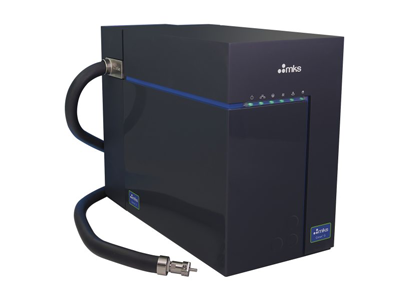
Atmospheric Pressure Gas Monitoring
Building on proven Cirrus Quadrupole Mass Spectrometry technology, the Cirrus 3 combines state-of-the-art performance in compact benchtop and rack-mounted formats. With a heated capillary inlet and fast scan speed (250 points per second), gas compositions can be tracked over wide dynamic range (ppb to percentage levels) more reliably.
- Monitors multiple gas species from trace levels (ppb) to high abundance
- Fast response – 250 data points per second & capillary inlet heated up to 300°C
- Precise and stable user-defined temperature control with enhanced oven and capillary designs
- Detect gases up to 300 amu. High resolution options (1-100HP)
- Recipe-driven Process Eye™ Professional supports gas monitoring and quantitation applications
- Fast and Reproducible Data
Cirrus systems are based on Quadrupole Mass Spectrometry, widely acknowledged as a preferred platform technology for many atmospheric pressure gas analysis applications. The Cirrus 3 system, with its improved temperature control and compact design, provides high levels of performance and robustness in space-efficient and flexible configurations that are ideal for a wide range of analytical applications.
Precision engineered to provide fast and reproducible data, Cirrus 3 can accurately detect and quantify gases and gas mixtures, from one or more sampling locations with a single instrument. Gas composition can be monitored over a wide dynamic range, from percentage levels down to the sub ppm range.
Cirrus 3 is an ideal choice for atmospheric gas analysis whether you work in a research setting or a manufacturing environment. By combining Process Eye Professional software with MKS technical support, Cirrus can be integrated, optimized, and automated to your precise specifications. Ultimately, users across your organization realize greater benefits of the power of quadrupole mass spectrometry.
Quadrupole Analyzer
At the heart of every Cirrus 3 system is a precision-built quadrupole analyzer incorporating a closed ion source, a triple mass filter, and a dual (Faraday and Secondary Electron Multiplier) detector system. This analyzer configuration is selected to optimize sensitivity and longterm performance stability
The Cirrus 3 system enables the AutoChem II 2920 and AutoChem 2950 HP to function as multi-component microreactors. Cirrus 3 software includes Process Eye™ Professional which controls analyzer data collection and monitors real-time data and analyzer status.
A Recipe wizard helps create and configure analysis conditions. The Micromeritics/Cirrus interface software runs inside Process Eye Professional and is accessed via its own menu.
This interface enables the user to control the analyzer via recipes which can also be saved for future use. The interface allows the user to collect data automatically from the AutoChem, customize Peak Jump recipes, access standard operations, calibrate detectors, and scale the AutoChem sample thermocouple signal.
Data integration with AutoChem II 2920 and AutoChem 2950 HP
- MS data may be analyzed using the Micromeritics Peak Editor that allows signal deconvoution (peak fitting), signal integration, and smoothing.
- The AutoChem software may be used to create MS calibrations and convert raw signals to quantitative analyses.
- Data may be used directly in AutoChem characterization reports: dispersion, active area, kinetics, crystallite size.
Features and Benefits:
- Monitors multiple gas species over a wide dynamic range of composition at atmospheric pressure
- Compact, modular design for ease of serviceability and maintenance
- Direct Ethernet interface – fully network compatible
- Recipe driven Process Eye™ Professional software for automated operation and calibration
- Fast response, silica capillary inlet heated to 150° C
For sampling different gas conditions, inlet options available are:
- Stainless steel capillary
- Low flow capillaries
- Multi-stream inlets
- Automated variable pressure inlet
Applications
- Monitoring of trace contaminants in process gas
- Catalyst studies
- Fuel cell monitoring and development
- Heat treatment/furnace monitoring
- Membrane studies
- Glove box gas monitoring
- Lamp manufacture
- Gas supply monitoring (cylinder checks and special gas production)
- Freon detection and identification
- Environmental monitoring. Thermal analysis – TGA, DTA
- Fermentation process monitoring

